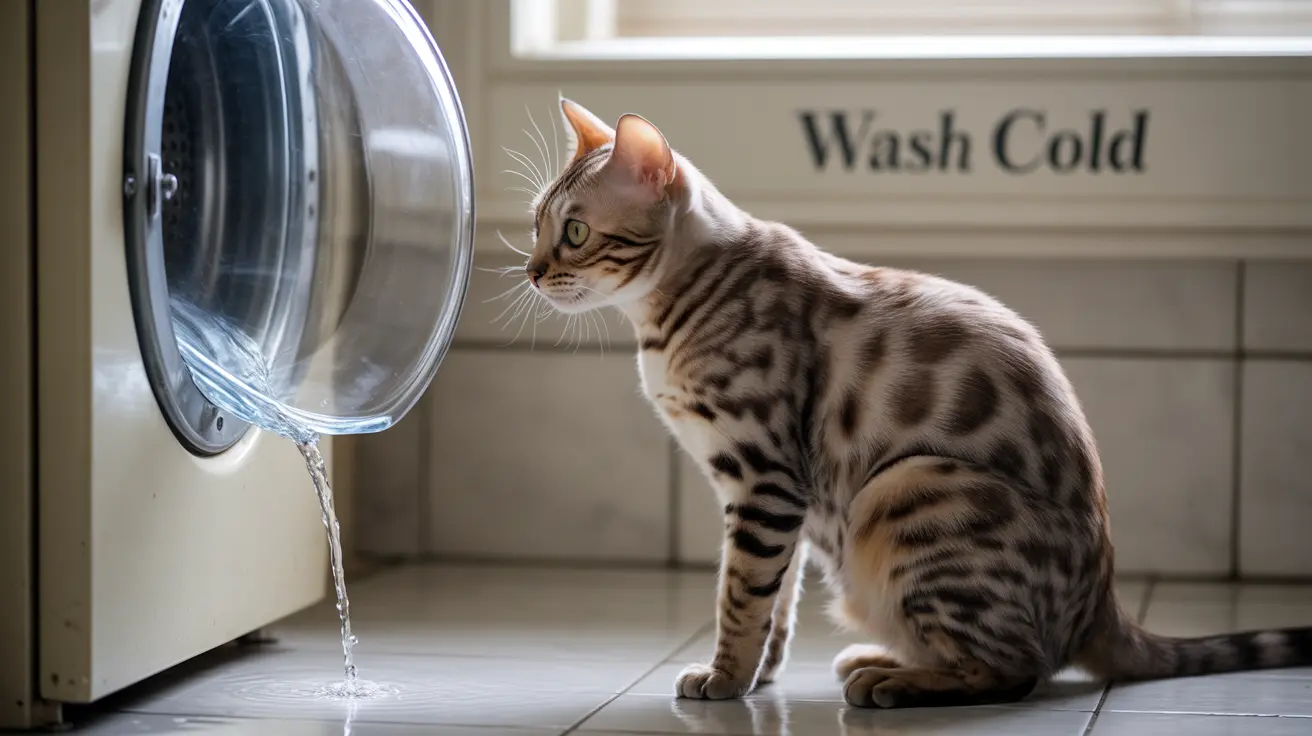Many pet owners wonder about using hot water to combat flea infestations on their cats and in their homes. While heat can be an effective tool in your flea-fighting arsenal, it's crucial to understand both its benefits and limitations to keep your feline friend safe and comfortable.
In this comprehensive guide, we'll explore how hot water affects fleas, safe methods for using heat in flea control, and the most effective strategies for protecting your cat from these persistent parasites.
Understanding How Heat Affects Fleas
Research shows that fleas are indeed vulnerable to heat, particularly at temperatures above 95°F (35°C). This sensitivity to temperature makes hot water an effective tool for certain aspects of flea control, especially when treating household items and surfaces.
However, it's essential to understand that heat treatment alone isn't a complete solution. Different flea life stages require different approaches, and some are more resistant to heat than others.
Safe and Effective Uses of Hot Water for Flea Control
Treating Household Items
Hot water washing is most effective when used on washable items like:
- Pet bedding
- Blankets and throws
- Removable furniture covers
- Cat toys and accessories
Use the hottest water setting your fabrics can tolerate, ideally above 95°F, and wash items for a complete cycle to ensure maximum effectiveness.
Environmental Treatment
Beyond laundry, hot water can be utilized in other ways to combat fleas in your home:
- Steam cleaning carpets and upholstery
- Mopping hard floors with hot water and appropriate cleaners
- Soaking flea combs in hot, soapy water after use
Why Hot Water Isn't Safe for Direct Cat Treatment
While hot water can kill fleas, it's not safe to use directly on your cat. Cats have sensitive skin that can easily be burned or irritated by hot water. Additionally, the stress of a hot water treatment could be traumatic for your pet.
Instead of hot water, veterinarians recommend:
- Veterinary-approved flea treatments
- Lukewarm baths with cat-safe flea shampoo when necessary
- Regular grooming with a flea comb
- Preventative medications prescribed by your vet
Creating a Comprehensive Flea Control Strategy
The most effective approach to flea control combines multiple methods:
- Regular treatment with vet-approved flea preventatives
- Frequent vacuuming and proper disposal of vacuum contents
- Hot water washing of pet bedding and fabrics
- Environmental treatment of your home and yard
- Regular monitoring and grooming of your cat
Frequently Asked Questions
Does hot water kill fleas and their eggs in pet bedding?
Yes, washing pet bedding in hot water (above 95°F) can effectively kill fleas, eggs, and larvae. Use the highest temperature setting safe for the fabric and complete a full wash cycle.
How effective is hot water in treating fleas on cats compared to other methods?
Hot water should not be used directly on cats for flea treatment. Veterinary-approved flea medications and treatments are much more effective and safer for your cat.
Can a hot water bath be used to safely remove fleas from a cat?
No, hot water baths are not safe for cats. If bathing is necessary, use lukewarm water with cat-safe flea shampoo, and always consult your veterinarian first.
What is the most effective way to use hot water as part of a comprehensive flea control plan?
Use hot water for washing pet bedding, toys, and household items, combined with proper flea medications and regular cleaning practices.
How does heat treatment compare to chemical treatments for getting rid of fleas in homes with pets?
While heat treatment can be effective for household items, chemical treatments prescribed by veterinarians are more reliable for treating pets and providing ongoing protection against fleas.
Remember, while hot water can be a valuable tool in flea control, it should never replace veterinary-approved flea treatments for your cat. Always consult with your veterinarian for the most appropriate flea control strategy for your specific situation.






